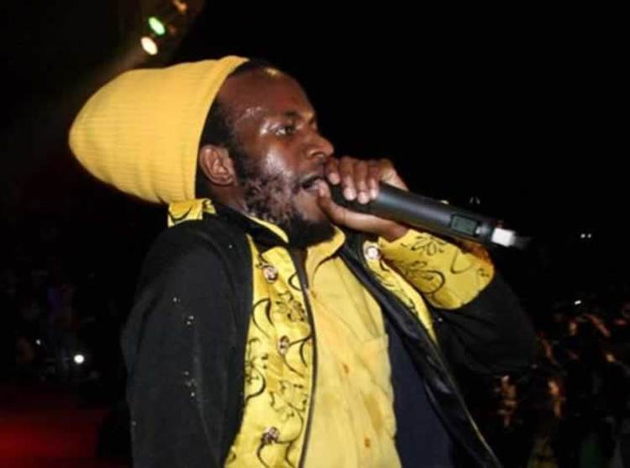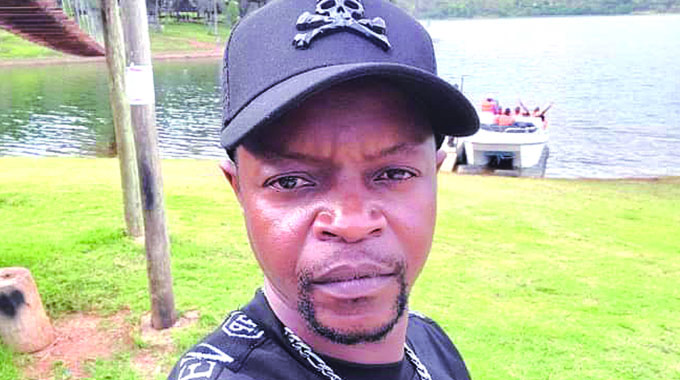Artists rewarded for outstanding creativity

Stephen Garan’anga Visual Art
It has always proven quite challenging for artists to create work under a given theme especially to those who work outside exhibition systems.
They are used to creating what they want at their base or produce and reproduce as dictated by small commercial commissions.
At times when they create a remarkable one-off piece that sales or get popular with their colleagues, they tent create more similar pieces with the assumption that it will lure the market much more. But this is less successful as facts have it that there are more opportunities and market to creativity than repetition.
The country’s severe economic hardships like everywhere else seem to influence the commercial drive for some of the stationed artists at Chitungwiza Arts Centre.
This was recently revealed at their adjudicated annual exhibition under the 2015 theme “Rebirth”.
Stone carving is primarily the daily activity at the centre and as expected all the artists’ work demonstrate great skill, variety of technique and excellent handling of medium.
The theme “Rebirth” had a wide interpretation and the artists graced various subjects to link with it and a significant number sailed through but a handful of others were found wanting in some regard.
The Arts Centre’s office had been in consultation for various procedures for the show with the chief curator and deputy director of the National Gallery of Zimbabwe Raphael Chikukwa.
The adjudicating panel which assessed the artists’ work comprised of established artists Taylor Nkomo, Walter Ndundu and this writer who looked at creativity and innovation, construction, originality, general appeal and relevancy to the theme amongst other things.
In general the pieces as individual artworks were quite impressive but there were other pieces outside the main exhibition within the centre at various artists’ working spaces that looked similar to some in the show.
Other pieces seemed to have been just picked entered into the show as artworks but without any relevancy to the theme. An art show with a theme dictates that artists be aware of the theme in time so as enable them to meditate on it and if it means researching they should have ample time to do that. This is critical as it to permit practitioners to create work specific and relevant to the show. Artists too are encouraged to experiment and use other media to promote innovation and bring in variety.
However, there were some astonishing theme specific work like Rickson Zavare’s three part piece titled “Free Crime Environment”, which saw him being rewarded for the most outstanding piece, followed by Farai Nyakanyanza’s “In My Forefather’s Jacket” and on third was “Owl” by Taurai Mupaso. There were also other pieces worthy special mentioning because of their applications of various design skills like Rufaro Murenza’s “Charity Begins at Home” and “Celebrating Together” by Arthur Manyengedzo.
The joyous official opening ceremony was full of entertainment and educative insights from Raphael Chikukwa, the director of the Culture Fund of Zimbabwe Trust Farai Mupfunya and Audrey Charamba from the National Arts Council of Zimbabwe and Reverend Paul Damasane.
As the artists had a walkabout with the officials, Rickson Zavare narrated that his piece, which was neither figurative nor had animal representation like the rest was inspired by his experiences whilst in Algeria for his artistic endeavours.
He explained that he forgot his bag with all his important possessions at a bus stop about 300 kilometres from his place of residence and later after realisation advised their responsible driver who assured him that they would get him back his bag. A week later they went back to the bus stop and found the luggage intact.
So he imagined such a scenario for a modern day Zimbabwe as a rebirth of a new living culture. His piece has a single pole bus stop shed of an oval shape like top and a bus stop sign with a similar black and white pole of black serpentine and white granite stones.
The poles are about two metres high or more with the bus stop inscribed words at the top on a vertical rectangular stone panel. The forgotten bag in form of a stone is in between the two poles about three metres apart but about a meter close to the shed.
Farai Nyakanyanza intelligently used a ragged fossilised brown rock as the bulk of a human body, which he attached a smoothly carved head of brown and green verdite rock before decorating the chest with fragments of white granite rock in his “In My Forefather’s Jacket”.
“Owl” by Taurai Mupaso has a heavy block of black raw serpentine with a touch of brilliance where a tiny portion of the rock worked to creating the portrait of the sitting bird of the night. It is the organisation of such adjudicated shows with rewards that also motivates artists to stretch their imagination and create what has not been seen before.
This will develop the practitioners and attract various platforms and markets. The artists need to create thinking of opportunities beyond their working spaces and the country’s geographical boarders.
Chitungwiza Arts Centre is located 30 kilometers in the south-west periphery of Harare in Zengeza 4 area of Chitungwiza.
It was established in 1997 as a poverty alleviation programme which was supported by the United Nations Development Programme, the government and the National Arts Council of Zimbabwe. They provided the land and the initial raw materials which helped artists to develop and assume full responsibility of Centre.
It is a successful community arts project which is benefiting the greater Chitungwiza residence with a stable workplace for the development of the arts.








Comments